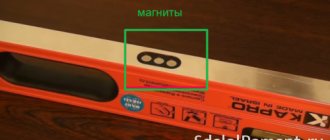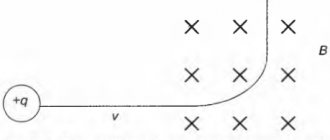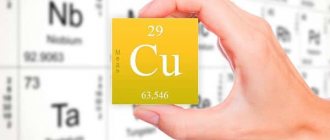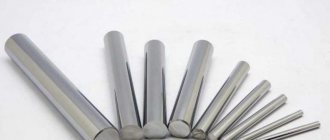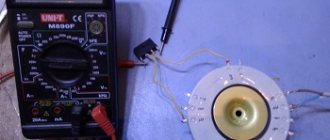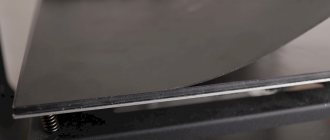A neodymium magnet (also known as NdFeB, NIB, or Neo magnet) is an extremely powerful magnet made from rare earth metals: typically an alloy of neodymium, boron, and iron, forming the Nd2Fe14B tetragonal crystal structure. It was first developed in 1982 by General Motors in partnership with Sumitomo Special Metals. These are the strongest permanent magnets commercially available, with more than 18 times the magnetic energy of conventional magnets. Neodymium magnets come in several classes, characterizing the strength of their attraction, for example, N28, N35, N38, N40, N45. The strongest magnet on this list is N45, but there are stronger ones. A good neodymium magnet has a magnetic induction of at least 12,500 Gauss (Gauss is a unit of magnetic induction).
They are much stronger than the more common ceramic magnets. Neodymium magnets are much more powerful than conventional magnets, but they are also more expensive than conventional ones. Therefore, you must work with them as carefully as possible, observing proper safety precautions. Their magnetic fields can influence each other even at a distance of more than 30 centimeters. Please note that neodymium magnets are a brittle alloy. They are usually coated with a hard nickel-plated protective layer, but do not allow multiple magnets to meet at their full strength, otherwise they may be damaged and small pieces of metal may break off on impact.
This is an N45 class magnet, magnetic induction - 13800 Gauss
This video shows how super magnets destroy various objects upon collision :
Marking features
So, the most important characteristics of a magnet can be determined by its brand, which manufacturers usually mark with a letter and a number. The letter indicates the maximum temperature at which the product can be operated. For example, neodymium magnets N52 belong to the “Normal” class, which corresponds to the English letter “N” and retain their properties up to +80 0C. Such temperature conditions are sufficient in most cases of using magnetic parts, therefore such magnets are the most popular and relatively inexpensive. Next, with a gap of 20-30 degrees, come the categories “M”, “H”, “SH”, “UH” and the most resistant to high temperatures neodymium magnet, the alloy in which is called “EN”. It does not lose efficiency even at +200 0C and can be used as a component of very hot units. These are various electric motors, generators and other complex devices.
Now let's say a few words about the number in the marking, indicating the level of magnetic energy, measured in kiloJoules per cubic meter. The higher the class number, the theoretically more powerful the magnetic part. That is, simply put, neodymium magnet alloy 42 is more powerful than its “brother” grade 33 and “weaker” than products designated by the number 50.
The concept of a class of NdFeB products
Magnetic products that are offered for sale on the specialized market are divided into classes. Each of them has a set of specific technical characteristics. You can find out about them if you study the information contained on the product (applied in the form of markings). They are represented as certain combinations of letters and numeric symbols. The units of measurement for magnet characteristics are those included in the SI and SGSE (two popular measurement systems). The only exception is the indicator of the maximum permissible operating temperature, which is designated exclusively in accordance with the rules of the SI system.
The main technical characteristics of neodymium magnets are as follows:
- maximum operating temperature;
- magnetic energy;
- coercive force;
- residual magnetic induction.
Weight of magnetic devices
However, when selecting a rod, ring or bar made of neodymium, one should not forget that the tearing force they possess depends not only on the properties of the metal, but also on the massiveness of the product itself. Small and large devices have different attractive characteristics, even if their composition is absolutely identical. Thus, an N35 neodymium magnet in the form of a 70x50 disk will certainly be more powerful and, accordingly, more efficient than a 40x10 cylinder, albeit made from a class 52 alloy. Although, it is possible to accurately determine the characteristics of a particular product only with the help of special measuring instruments.
Traditionally, online stores sell products made from materials with a relatively low energy level, most often neodymium magnets N35-42. And if the client wants to purchase a more powerful device, he simply chooses a product of greater weight and the desired shape. More impressive indicators are found in neodymium parts produced for special complex devices, for example, for particle accelerators, aircraft, or space modules. In such devices, it is necessary to achieve maximum efficiency with the smallest dimensions and weight; accordingly, an N38 neodymium magnet is not suitable here. Indeed, in the case of delivery into orbit, every kilogram of cargo and every extra cubic centimeter of free space is important.
How to use
Neodymium magnetic element is the strongest, exceeding analogues that are based on rare earth metal. In addition, neodymium is capable of maintaining a magnetized structure for a significantly long time. Such equipment can be used in various fields. For example, it is used in the manufacture of over-ear headphones with wind generators, motor wheels and scooters.
You may be interested in Features of calculating a voltage divider
Note! Magnets are actively used in industrial, household, and medical fields. They are also used to carry out search work with a metal detector. They can often be found in plumbing fixtures or souvenirs.
Specific examples include the use of magnets in the development of medical devices, magnetic treatment of water, the creation of oil and technological filters, and the formation of actuators with highly sensitive sensors. In addition, they are needed to produce clothes with covers and shoes, and to create advertising, information and navigation materials.
Scope of application of the material
Overall, neodymium is the most powerful permanent magnetic material that has high resistance to demagnetization, attractive power, and a metallic appearance. It has a long service life and consists of boron, iron and a metal of the lanthanide group.
Surface characteristics and thickness of the attracted object
If we are talking about the power of magnetic products, we must also mention that the pull-off force depends not only on the massiveness of the device or on the properties of the material, but also on the characteristics of the surface attracted by neodymium. If we read in the product description that a neodymium magnet N45 has a tearing force of 100 kg, this means that it is capable of holding objects weighing a hundredweight, provided that these objects have sufficient thickness (at least 2 centimeters), and also provided that their surface will be absolutely smooth. The smaller the thickness and the more irregularities on the surface, the correspondingly less force will be required to pull off.
Coercive force
This indicator is necessary to determine what the external magnetic field should be in order for a fully magnetized NdFeB product placed in it to demagnetize. The higher the number, the higher the ability of the alloy to retain residual magnetization.
Obtaining such indicators is especially important in cases where the product is operated in conditions of strong external fields, for example, in close proximity to a powerful electrical component. The units of measurement are kiloampere per meter or Oersted.
Decrease in magnetic energy over time
As you know, neodymium magnets lose their properties slightly over time, about 1-2% every decade. At the same time, engineers should take into account demagnetization when creating certain devices. Thus, after 20 years of operation in a generator, a neodymium magnet N50 will be able to perform its functions by 86-98%. Of course, in everyday life such a difference is almost unnoticeable, but in the case of precision equipment, it may be necessary to replace the neodymium part. Note that the ferrimagnetic alloy will lose an incomparably large part of its properties during this time.
Scope of application
Such magnets can be used not only in large industries, but also in everyday life. Most often they are used for the following purposes:
- Search work at the bottom of reservoirs. Magnets can be used to clean water bodies of scrap metal or search for them. They do not rust over time and can pull out objects from very deep places.
- Fastening metal objects. Thanks to its high strength, the magnet can handle a lot of weight. It is often used in workshops and factories for storing metal objects.
- Magnetization of some objects. Thanks to the powerful magnetic field, such a magnet can be used to magnetize scissors, needles, screwdrivers, etc. You can also use it to restore the power of some objects.
- Correcting dents in metal. Powerful neodymium magnets are often used to remove dents from metal cases.
- Purification of oils and petroleum products from chips and other metal contaminants.
The scope of application of neodymium magnets is much wider. It all depends on the needs and goals of a particular person. They are often used in heavy engineering, medicine, and the production of household appliances and furniture. They can act as powerful clamps. Even small magnets have high power.
Production Highlights
It is believed that the products we describe are made from particles of three chemical elements, but few know that even N52 neodymium magnets consist of 70% iron and almost 30% boron, and they contain no more than half a kilogram of rare earth metals per ton of total mass. However, the presence of even inclusions of neodymium radically changes the properties of the alloy, affecting its attractive properties and significantly extending the service life of the product.
Much also depends on the integrity of the manufacturer. Often, products of the 35th category can be passed off, for example, as N45 neodymium magnets. Therefore, consider the sensitivity of the products and work with suppliers you trust. Remember that some companies take advantage of the fact that the exact characteristics of products can only be determined using sophisticated instruments and only after the order has been received by the client.
Thus, we can conclude that the higher the number of the product brand, the more rare earth metal it contains. N38 neodymium magnets contain a higher percentage of iron than higher grades. Such products are excellent for use at home and in some industries. At the same time, complex mechanical units will require parts with a high content of rare earth metals.
Chemical composition of a magnet and its properties
So, let's look at what neodymium magnets are made of. Chemical formula of the magnet: Nd2Fe14B. In simple words, it includes:
- 2 neodymium atoms;
- 14 iron atoms;
- 1 bromine atom.
These are all rare earth metals. This combination gives the products incredible power, which is measured in Gauss. If ordinary magnets rarely produce more than 50 Gauss, then the strength of neodymium magnets can reach 13,500 Gauss or more. Although in most cases a magnet with a strength of 2000 Gauss is sufficient.
Properties:
- A small magnet, the size of a five-ruble coin, can withstand a weight of up to 9 kilograms.
- Neodymium magnets do not withstand very high temperatures and may lose some of their strength.
- The service life of the magnet is practically unlimited. Over a hundred years of service, he loses only 1% of his strength.
- Such products are completely safe for humans and the environment, but if used incorrectly they can harm the electromagnetic field of some devices.
The composition of the neodymium magnet alloy gives them great power and makes them reliable assistants both in everyday life and in production.
Reference! Despite their name, "rare earth" metals are not rare. They are found in all parts of the Earth. However, they are all found in small concentrations, so their extraction from the bowels of the earth is economically unprofitable for many countries.
What alloy is used in the product
Our store presents products with an average neodymium content. We mainly offer to buy N42 neodymium magnets. In the catalog you will find rings, disks, rods, bars and other forms of devices, as well as vinyl blanks and puzzles. Products are divided into categories by weight and, accordingly, by price. If you need serious power of the product, we suggest purchasing products with a more impressive weight. If there is no need for serious pull-off force, you can buy a neodymium magnet N42 of small dimensions. Please note that most of the products on the site are made in Russia and fully comply with the declared properties. The company's consultants are always ready to help with the choice.
Conclusion
Thus, when choosing a magnetic device, pay attention to its brand, which encodes the permissible ambient temperature and magnetic strength. However, the mentioned characteristics determine the effectiveness of the magnet only partly; it is also necessary to take into account its weight and size indicators. So if we consider the neodymium magnet N52 and N42, the comparison will be correct only if the devices have the same mass and shape. With impressive dimensions, a product with smaller marking numbers may be more powerful. Finally, pay more attention to the manufacturer and supplying company; this is the only way to obtain products that meet the declared parameters.
Maximum operating temperature
When using magnetic products, it is very important to take this indicator into account. If it is exceeded during operation, the magnet may lose its original properties. You can find out which temperature range is optimal for a particular product from the letter part of its marking: N (normal - up to 80°C), M (medium - up to 100°C), H (high - up to 120°C), SH (super high - up to 150°C), UH (ultra high - up to 180°C), EH (extra high - up to 200°C).
Please note that each group is characterized by the same maximum operating temperature - regardless of the shape and size of the products. For both rectangles 20x10x5 mm and balls D25, which are marked N42, the permissible temperature is 80°C.
As for the lower temperature limit, it is common for all classes of products and is about -60°C.
